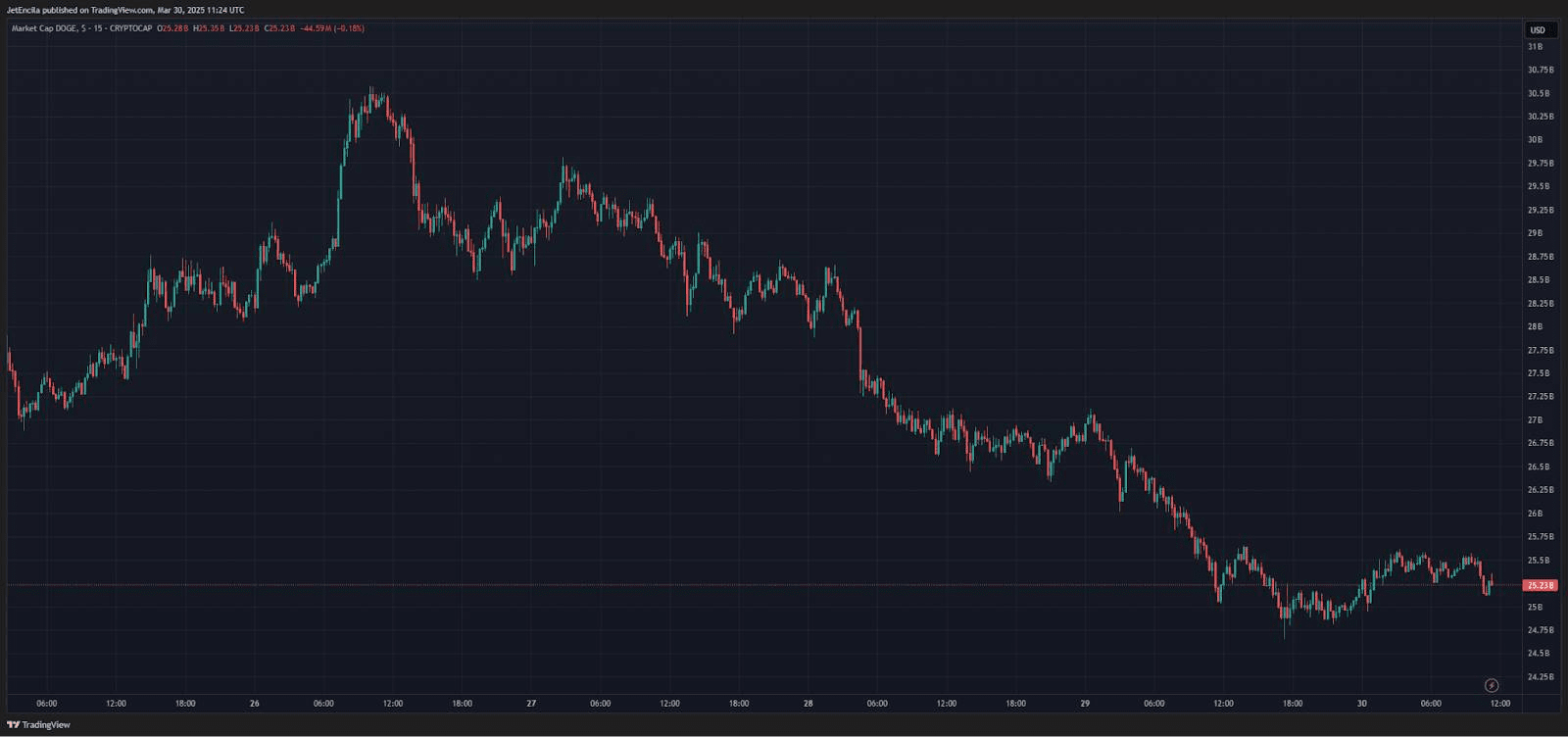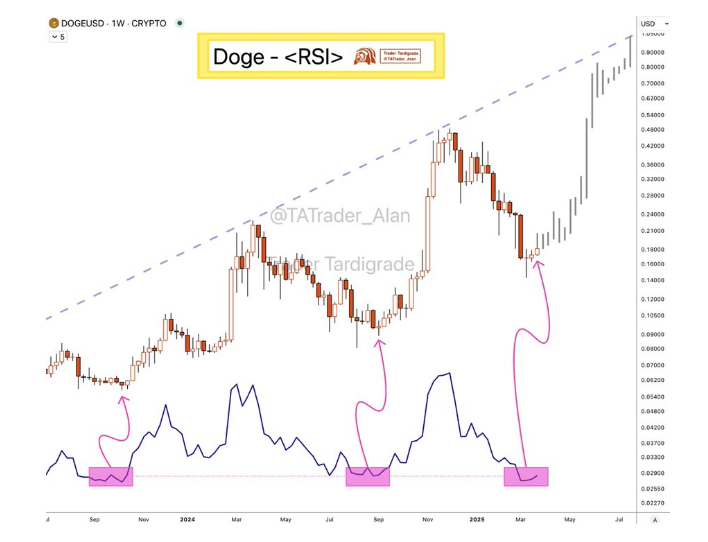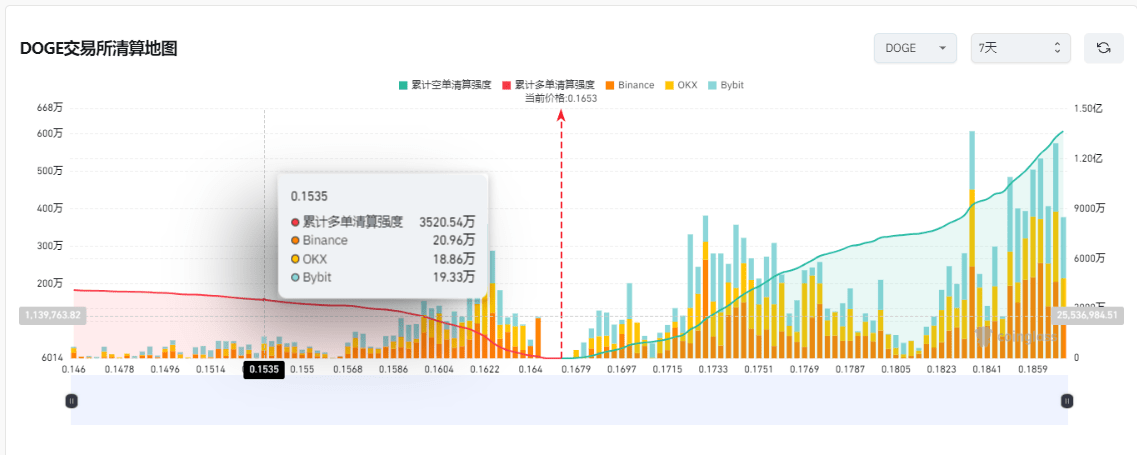On March 30, during a town hall meeting hosted by him in Green Bay, Wisconsin, Elon Musk made a clear distinction between the Department of Government Efficiency (DOGE) and the Dogecoin cryptocurrency.
He said: 'As far as I know, the government has no plans to use Dogecoin or any other currency. While their names are similar, our goal is to improve government efficiency by 15%.'
Musk further explained that the name's origin was related to suggestions from the internet. 'I originally wanted to name it the Government Efficiency Committee, but that felt too boring,' he said. 'Later, the internet suggested naming it the Department of Government Efficiency, and I thought that was right.'
When Musk emphatically denied the connection between the Department of Government Efficiency (DOGE) and Dogecoin at the town hall meeting, a cognitive war triggered by the same abbreviation quietly erupted. This game surrounding technical aspects, policy narratives, and capital leverage is pushing Dogecoin towards the final test of a historic bottom.
The naming conundrum: quantum entanglement of political symbols and crypto assets
Cognitive war of abbreviations
The Department of Government Efficiency (Department of Government Efficiency) sharing the DOGE abbreviation with Dogecoin is no coincidence. On the eve of the agency's establishment in August 2024, Musk intentionally retained the narrative interface for the crypto community in a naming poll initiated on the X platform. This collision of political engineering and meme culture is essentially Musk's ultimate manipulation of the attention economy—by creating semantic chaos, it reserves a public opinion buffer for policy experiments while injecting continuous topical momentum into Dogecoin.
Cognitive arbitrage of visual symbols
The Shiba Inu logo flash event on the DOGE official website in February 2025 is considered one of the most exquisite cases of cognitive manipulation in modern financial history. The 72-hour visual hint directly triggered a 14% instantaneous increase, with arbitrage funds completing a $70 million harvest amid information asymmetry. This 'policy memeification' operation reveals a new paradigm of market manipulation: when political symbols and financial symbols form quantum entanglement, existing definitions of 'market manipulation' by regulators can no longer cover this cross-dimensional attack.
The reflexive trap of narrative economics
Within 24 hours of Musk's clarifying statement, the sentiment value of DOGE-related tweets plummeted from +68 to -42, but addresses holding over 100,000 coins increased their holdings by 1.13 billion coins against the trend. This divergence between retail panic selling and institutional stealth accumulation exposes the fatal weakness of narrative economics—short-term emotions are easily manipulated by symbols, while whales have already established cross-market hedging mechanisms.
On-chain shadow war: silent harvesting of whales and the cognitive deficit of retail investors
Binary split of chip distribution
In the past 30 days, addresses holding 10,000 to 100,000 coins have reduced their holdings by 2.3 billion coins, while addresses holding over 1 million coins have increased their holdings by 4.1 billion coins. This 'de-retailization' process has reached a historical peak, with the circulation ratio of the top 1% of addresses rising from 58% to 67%, forming a highly concentrated control pattern. Notably, among the 17 new 'super whale' addresses, 12 completed OTC transactions through Coinbase Prime, showing that traditional institutions are quietly tightening their net.
The password of UTXO age distribution
The proportion of 'zombie coins' in Dogecoin, which have not been moved for over a year, has exceeded 43%, hitting a historic high. These long-term holders have a cost basis in the range of $0.05-0.08, and despite a current price drop of 60%, they still maintain over 200% unrealized gains. The presence of this 'sunk cost' makes conventional wash trading difficult to complete the bottom formation, and extreme events may trigger liquidations.
Paradigm shift of on-chain behavior
The Dogecoin network has seen an unprecedented 'HODL - Staking' composite strategy: the net outflow from the top 20 exchanges has been positive for nine consecutive weeks, while the locked amount in decentralized staking contracts has increased by 340% during the same period. The shift from trading assets to income-generating assets could reshape the valuation model. If the annual staking yield stabilizes above 8%, DOGE may become a 'crypto high-yield bond,' attracting conservative capital inflows.
Fundamental revolution: the life-and-death speed of deflationary narrative and payment ecology
Paradigm revolution of supply mechanisms
Billy Markus, co-founder of Dogecoin, revealed in February that DOGE may implement a deflationary mechanism through community consensus, with specific paths including: developers submitting code modification proposals (GitHub Pull Request), community and miners reaching a consensus, and running a new protocol. Currently, the total supply of DOGE is approximately 146.78 billion coins, with an annual issuance of 5 billion coins, and the inflation rate gradually decreasing as the total amount increases. Markus emphasized that DOGE's supply mechanism is more flexible than Bitcoin's and could outperform fiat currency systems in the long run. If the deflationary plan is implemented, it could provide long-term support for DOGE prices. However, this plan currently faces strong resistance from miners.
Lightning warfare of payment infrastructure
The number of merchants integrated into the Dogebox payment system has exceeded 1,800, with an average daily transaction volume reaching 2.4 million. If API integration with Square and Stripe can be completed before the second quarter of 2025, Dogecoin could become the first cryptocurrency to cover 5% of offline merchants across the U.S. However, regulators are closely examining its anti-money laundering compliance, with the CFPB requesting KYC data for all transactions over $10,000.
Political bargaining chip in ETF game
The approval process for three DOGE ETFs has become a bargaining chip in the game between the Trump administration and the SEC. White House aides revealed that the DOGE plan may use 'supporting financial innovation' as a bargaining chip to exchange for SEC approval of spot ETFs. If this political arbitrage succeeds, it will introduce billions of dollars of institutional funds into Dogecoin, fundamentally changing the market structure.
Technical strangulation: the life-and-death game between bulls and bears at the $0.16 defense line
Temporal and spatial compression of symmetric triangles

On the daily chart, the symmetrical triangle formed by Dogecoin since November 2024 is about to enter the final convergence phase. The upper and lower track convergence point of $0.16-$0.18 has become the battleground for bulls and bears, with a historical breakout probability of 87%, but the direction of the breakout depends on catalysts.
Weekly RSI alignment with candlestick patterns

For months, the relative strength index (RSI) of Dogecoin has been continuously declining across multiple time frames. On the social media platform X, crypto analyst Trader Tardigrade noticed an interesting phenomenon in the weekly candlestick chart's RSI indicator. He believes that the RSI may rebound from the current level, indicating that Dogecoin is likely to break through the $1 threshold.
The last line of defense for miner costs
On-chain data shows that the current price of $0.16 is close to the shutdown price threshold of the three major mining pools. If the price falls below this point, it will trigger the forced exit of $320 million worth of mining machines, forming a positive feedback loop of a 'death spiral.' However, Glassnode has detected that the top five mining pools have established a $180 million protection in the $0.15-0.16 region, suggesting that key funds are firmly defending this bottom line.
Undercurrents in the derivatives market

Coinglass data shows that the current Dogecoin contract holdings have significantly decreased, and the funding rate has started to turn negative. This extremely bearish structure, combined with the funding rate remaining negative (-0.03%), suggests that the market has priced in the most pessimistic expectations. Coupled with the liquidation data from exchanges, Dogecoin's derivatives market may trigger a short squeeze, implying that Dogecoin may have reached a temporary bottom.
Ultimate revelation: finding order in chaos
When Musk insisted on using DOGE to name the government reform plan, he may have already grasped the wealth code of the post-truth era: in this world where consensus is scarcer than code, the bottom is not a mere technical indicator point, but a critical point of collective cognition. Dogecoin is undergoing the most complex stress test in the history of crypto civilization—it is both the grave digger of the old paradigm and the midwife of the new order.
DOGE
